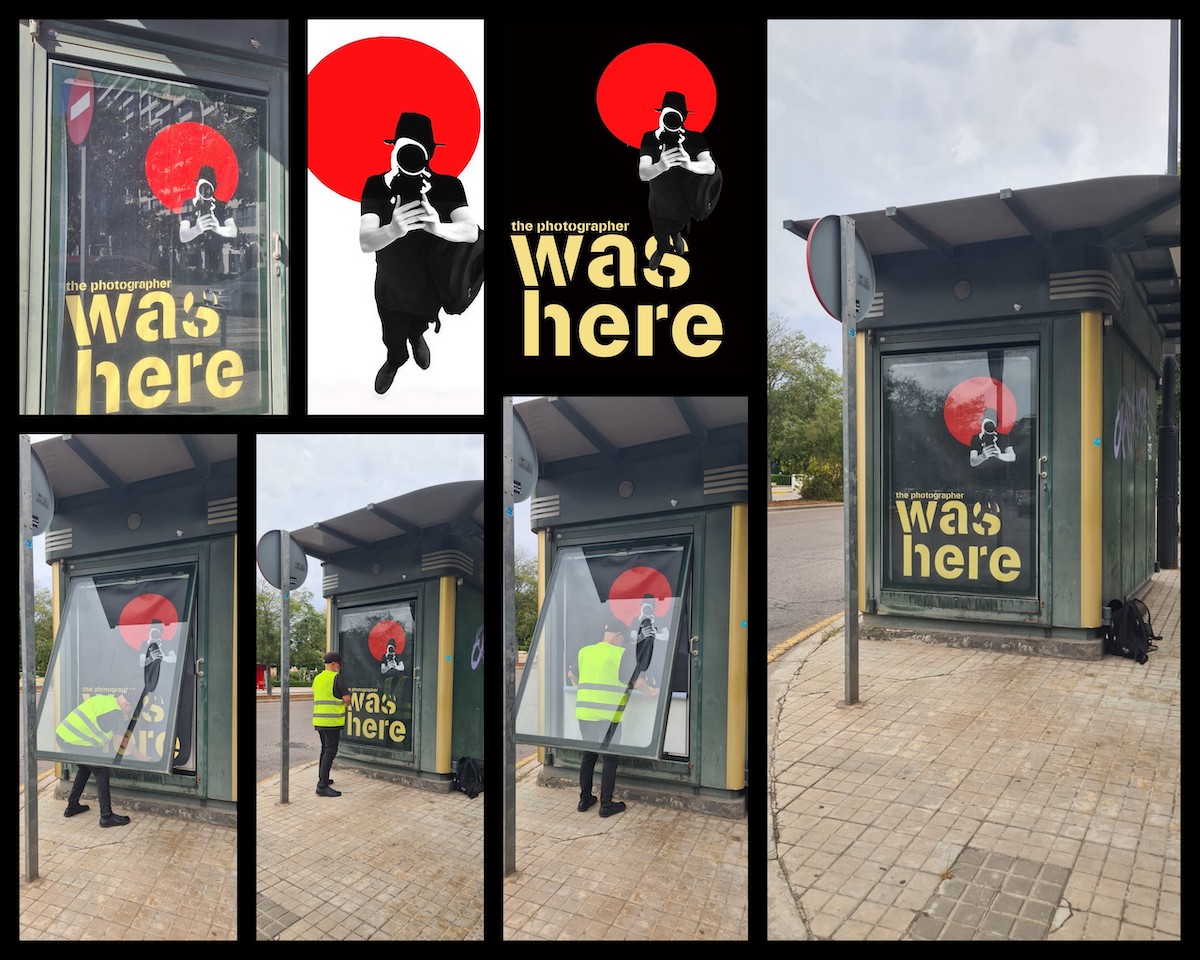Furtive urban art is like a second skin for the city. It is born on the surfaces, cracks, and oversights of urban planning: on chipped walls, in the rust of a lamppost, or within the rough texture of a forgotten alley. It is a spontaneous and often ephemeral dialogue that seeks to reclaim the gray environment, turning it into a canvas for personal expression.
However, a qualitative and transgressive leap occurs when this manifestation abandons the visual periphery and decisively assaults the advertising space.
Ad shells are, by definition, altars dedicated to consumption. They are spaces of light and glass designed to tell us what to buy, what to desire, or what we lack. When the artist intervenes in these supports (as we see in the poster installation sequence), they break the mercantile narrative of the city. The “intruder” dresses as a technician, opens the display case, and replaces the advertisement with art.
At that moment, the message ceases to be a commercial transaction and becomes an existential statement.

The work “The photographer was here” does not sell cameras or trips. It does not offer a product. It simply offers a presence. It is the modern, aesthetic version of the primal “tag,” of the ancestral human instinct to leave a mark in the cave. By appropriating the ad shell, the author forces us to pause—not to consume, but to recognize that someone was there, that there was a human gaze behind the lens, and that, for an instant, public space belongs to people again and not to brands.
It is the triumph of the individual over the anonymity of the metropolis: a reminder that the city is alive because we inhabit it.
- In June 2025, we decided to make the leap from the wall to the ad shell, using the poster—the same exquisite language of advertising with its same forms and allure.
- The intervention took place in the city of Valencia (it is still visible) in the display box of a disused newsstand, but in a high-traffic area where visibility is guaranteed, near the old Turia riverbed.
Author: The Photographer @mrbt62
Del Muro a la Marquesina: “THE PHOTOGRAPHER WAS HERE”
El arte urbano furtivo es como una segunda piel de la ciudad. Nace en las superficies, grietas y descuidos del urbanismo: sobre paredes desconchadas, en el óxido de un poste de luz o en la textura rugosa de un callejón olvidado. Es un diálogo espontáneo y a menudo efímero que busca reclamar el entorno gris para convertirlo en un lienzo de expresión personal.
Sin embargo, se produce un salto cualitativo y transgresor cuando esta manifestación abandona la periferia visual y asalta decididamente el espacio publicitario.
Las marquesinas son, por definición, altares dedicados al consumo. Son espacios de luz y cristal diseñados para decirnos qué comprar, qué desear o qué nos falta. Cuando el artista interviene estos soportes (como vemos en la secuencia de la instalación del cartel), rompe la narrativa mercantilista de la ciudad. El “intruso” se viste de operario, abre la vitrina y sustituye el anuncio por arte.
En ese momento, el mensaje deja de ser una transacción comercial para convertirse en una declaración existencial.
La obra “The photographer was here” (El fotógrafo estuvo aquí) no vende cámaras ni viajes. No ofrece un producto. Simplemente ofrece una presencia. Es la versión moderna y estética del “tag” primigenio, del instinto humano ancestral de dejar una marca en la cueva. Al apropiarse de la marquesina, el autor nos obliga a detenernos no para consumir, sino para reconocer que alguien estuvo allí, que hubo una mirada humana detrás del objetivo y que, por un instante, el espacio público vuelve a pertenecer a las personas y no a las marcas.
Es el triunfo del individuo sobre el anonimato de la metrópolis: un recordatorio de que la ciudad está viva porque nosotros la habitamos.
* En junio 2025 decidimos saltar del muro a la marquesina, utilizando el cartel, el mismo lenguaje exquisito de la publicidad con sus mismas formas y reclamos.
* La intervención se realizó en la ciudad de Valencia (todavía está visible) en la marquesina de un kiosko de prensa en desuso pero en una zona de mucho paso donde la visibilidad está asegurada próxima al viejo cauce del río Turia.
Autor: The Photographer @mrbt62

